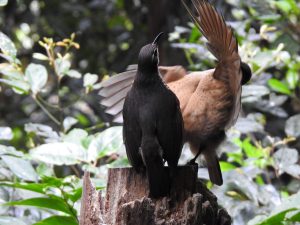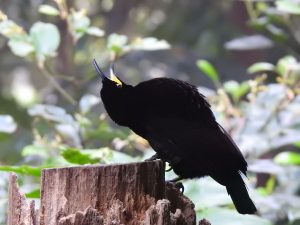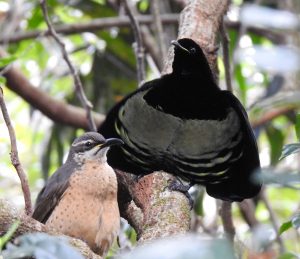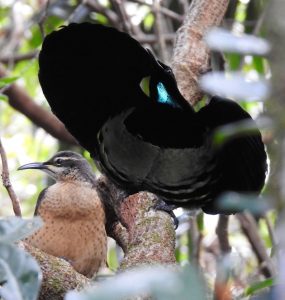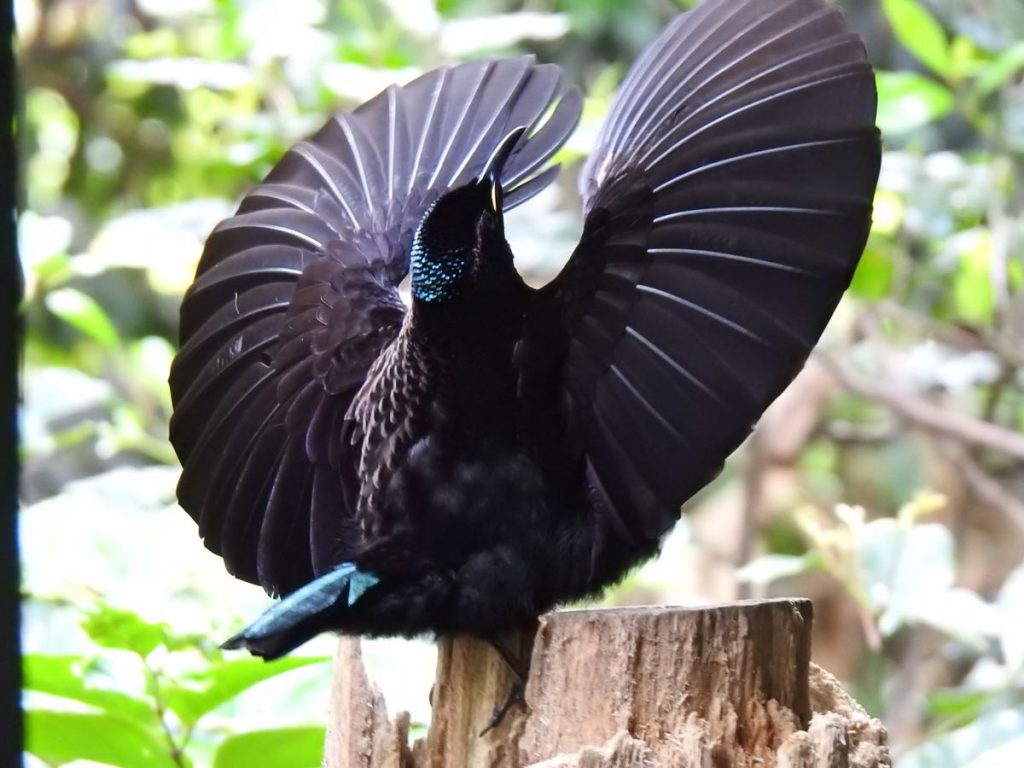Brush Turkey (Alectura lathami)
It is time tribute was paid to the much maligned Brush Turkey, the scourge of Paluma gardeners. It is just as much a member of the local birdlife as the Riflebird, Catbird and Satin Bowerbird, and deserves to be acknowledged as such. Yet so often, visitors to Paluma do not give the turkey a second glance so intent are they in spotting the rarer birds. On the other hand, some have mistaken the turkey’s identity and proudly report having seen a cassowary!
In spite of the curses bestowed on the turkey as he or she rummages through the garden, uprooting precious plants and redistributing carefully laid mulch, I suspect most people hold a sneaking affection for them. I find them rather endearing. When I moved to Paluma, I inherited three who roosted in a tree in my back garden. They waited each day at the back steps for breakfast scraps calling with their funny grunting clucks as they followed me to the edge of the forest where I put their food scraps out. Turkeys still have breakfast with me and are usually close by when I work in the garden.
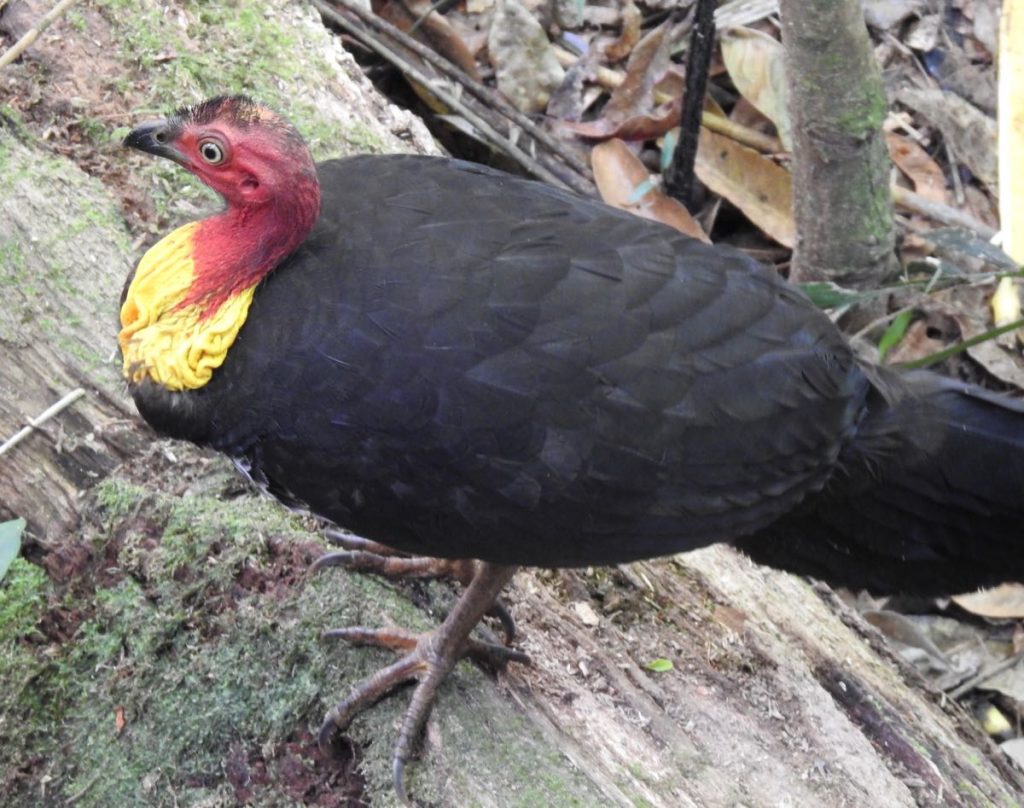
At present the male turkeys are still dressed in the magnificent courtship plumage which they donned during spring when they felt the first pangs of love in the air, with bright yellow wattles hanging in fat coils from their crimson necks. So take a moment to admire them as they strut their stuff through the village. They have been working tirelessly for many weeks, raking leaves, throwing aside sticks and twigs, to build nesting mounds which can cover an area of around two metres square and be up to a metre and a half high.
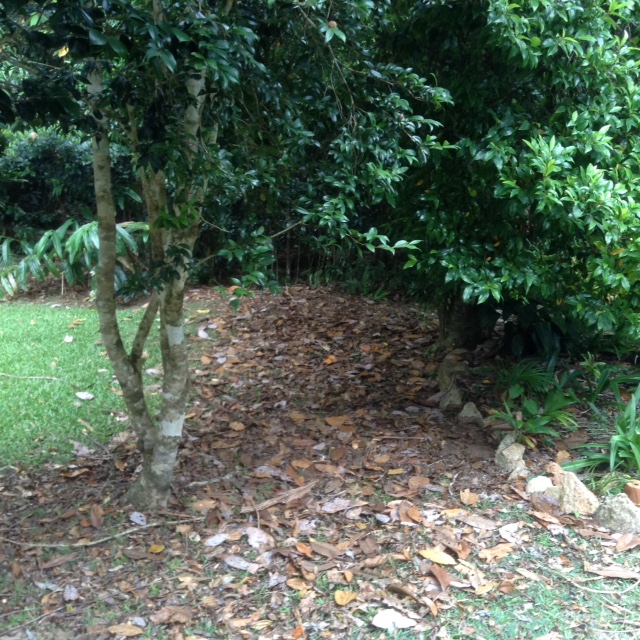
Their big feet, (Brush Turkeys are Megapodes – meaning ‘big feet’), are useful tools for raking leaves for their nesting mounds and for foraging for food amongst the leaf litter on the forest floor and in our gardens.

The mound completed, the male has to entice females to lay eggs in it; several hens will oblige – with eggs not necessarily fertilized by the builder of the mound. The hen’s job done, off she goes. She provides no parental care other than providing eggs with particularly rich yolk which can feed the chick after it has hatched. The male turkey will satisfy himself that the eggs are deeply buried in the mound.
The decomposition of the leaves and mulch with which the mounds are constructed provide the heat required to incubate the eggs. He keeps watch, turning the mulch to maintain a constant temperature until the chicks are ready to hatch, (after about 50 days), then off he will go, his job also done.
After the chick hatches it rests for several hours absorbing nutrients from the yolk reserve. During this time its plumage dries and its lungs fill with air. Then it has to work its way out of the mound, an effort that takes on average, 40 hours. It will rest frequently, making a small cavity around itself which allows it to breathe. Once out of the mound, always during daylight hours, the chick has to fend for itself, making its way quickly to the shelter of shrubbery or vine thickets before dark to avoid predators such as dingoes, owls, pythons, carnivorous marsupials and feral cats. The chicks know instinctively to feed on grubs and insects in the leaf litter.
New chicks with their fluffy brown feathers and weighing only about 150 grams, are seldom seen: partly because they gain black feathers at only a few weeks old, partly because they stay concealed within the forest until they are near adult size, (at around 8 months old), but mainly because so many of them do not survive the first few months, falling victim to predators. A hen can lay up to 24 eggs in a season but sadly, of every 200 eggs laid only one will reach adulthood.
So; Salute the Brush Turkey – a battler and survivor.
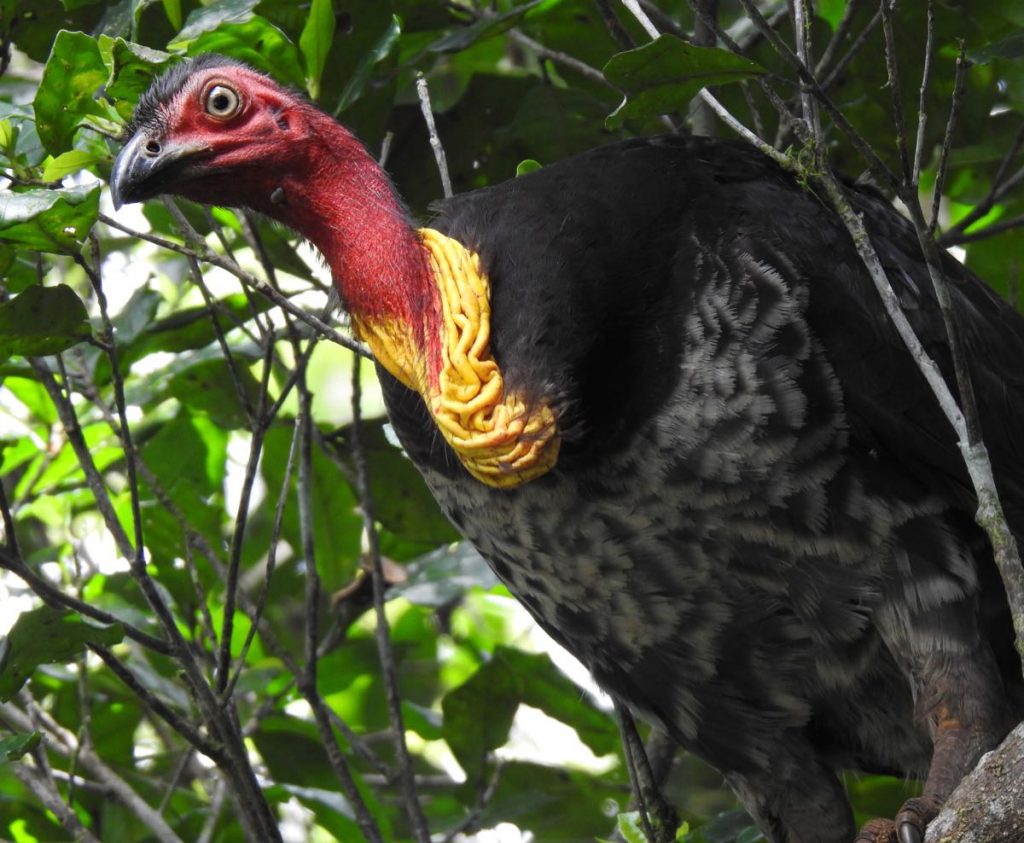
For more reading, an excellent article on the Brush Turkey written by Dr Ann Goth may be found in Nature Australia (Spring 2005, Volume 28, Number 6).
Article by Colwyn Campbell & Turkey Photos by Michele Bird

 A sumptuous feast consisting of BBQ meats and an array of salads and sweets was enjoyed by all. The ‘BBQ-er’ for the evening was Ross Hyne, closely supervised by ‘Mr. BBQ’ himself, Don Battersby. As usual, the Bar and Beverages were expertly dispensed by Les Hyland.
A sumptuous feast consisting of BBQ meats and an array of salads and sweets was enjoyed by all. The ‘BBQ-er’ for the evening was Ross Hyne, closely supervised by ‘Mr. BBQ’ himself, Don Battersby. As usual, the Bar and Beverages were expertly dispensed by Les Hyland.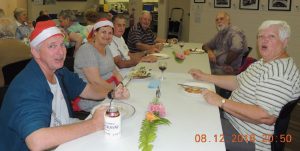
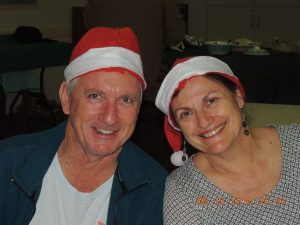
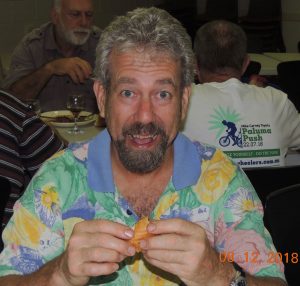
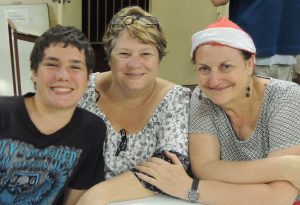


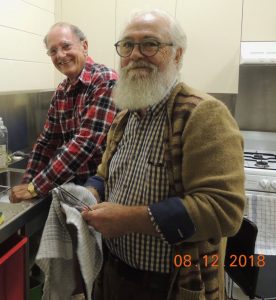
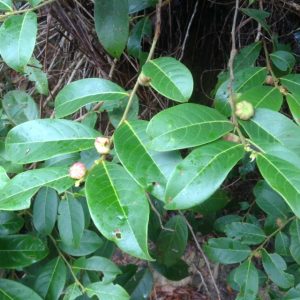 Glochidion hylandii is a shrub or small tree growing to a height of up to 12 metres, usually to be found on the edges of rainforests or in revegetation areas as a pioneer tree. The leaves are simple, elliptic and between 30 and 150 mm long with clearly defined veins. Upper surfaces are smooth, or sparsely covered with fine hair while the undersurface is slightly waxy with fine brown hairs. Flowers, growing in the leaf axils are inconspicuous, being only 2 or 3 mm with 6 green sepals and no petals.
Glochidion hylandii is a shrub or small tree growing to a height of up to 12 metres, usually to be found on the edges of rainforests or in revegetation areas as a pioneer tree. The leaves are simple, elliptic and between 30 and 150 mm long with clearly defined veins. Upper surfaces are smooth, or sparsely covered with fine hair while the undersurface is slightly waxy with fine brown hairs. Flowers, growing in the leaf axils are inconspicuous, being only 2 or 3 mm with 6 green sepals and no petals.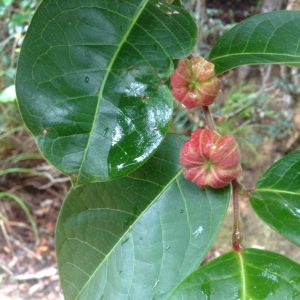



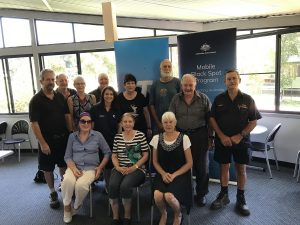 Rachel and Joanne from Telstra came up from Townsville and were welcomed by P
Rachel and Joanne from Telstra came up from Townsville and were welcomed by P
 Paluma Mobile Tower – Launch Celebration
Paluma Mobile Tower – Launch Celebration